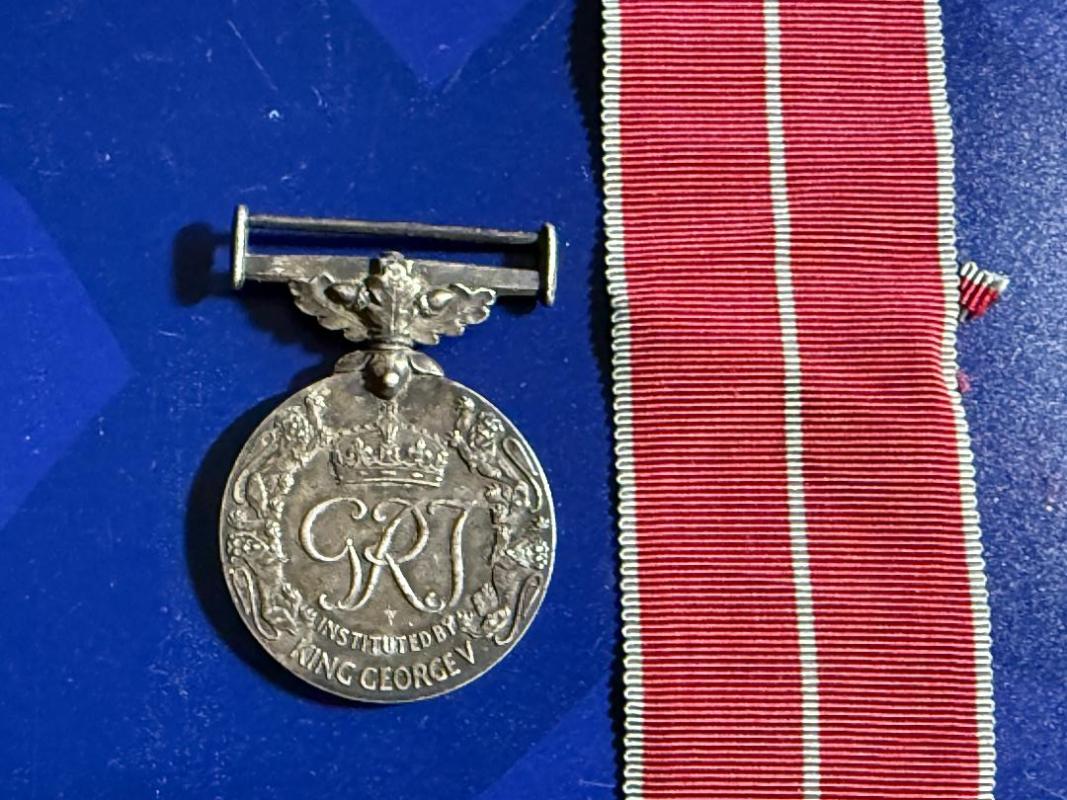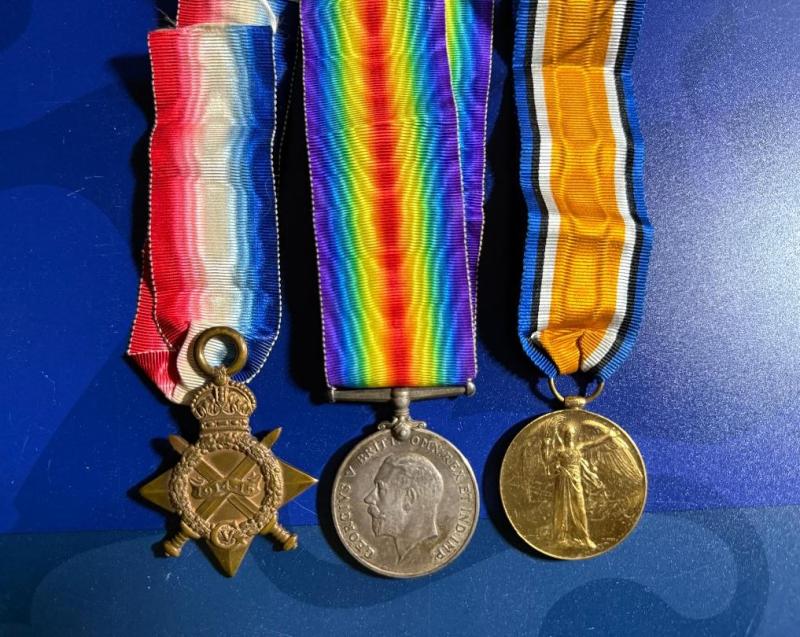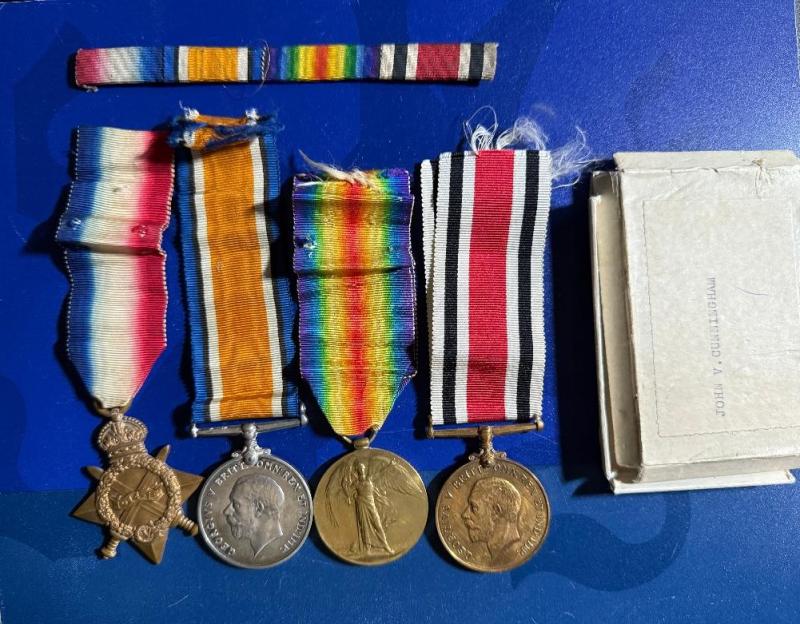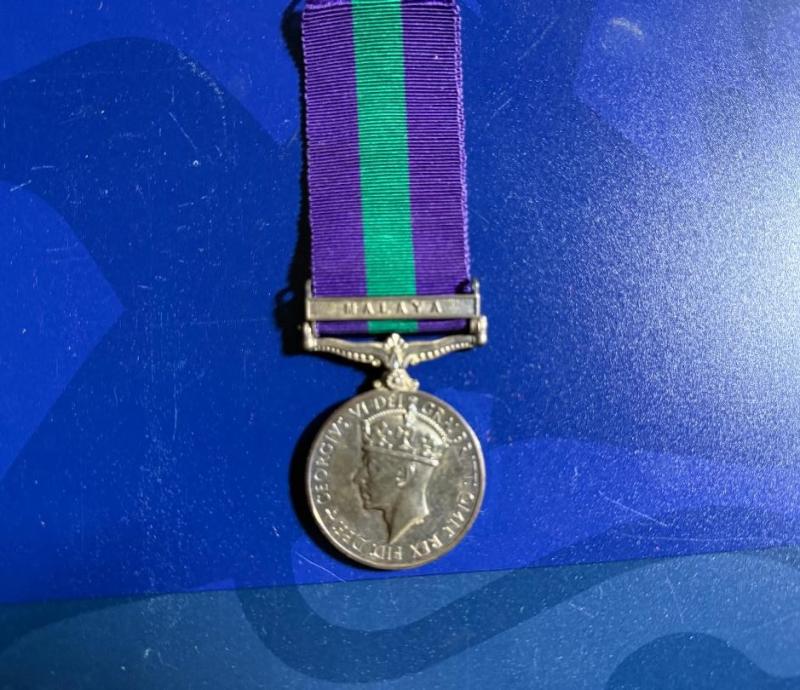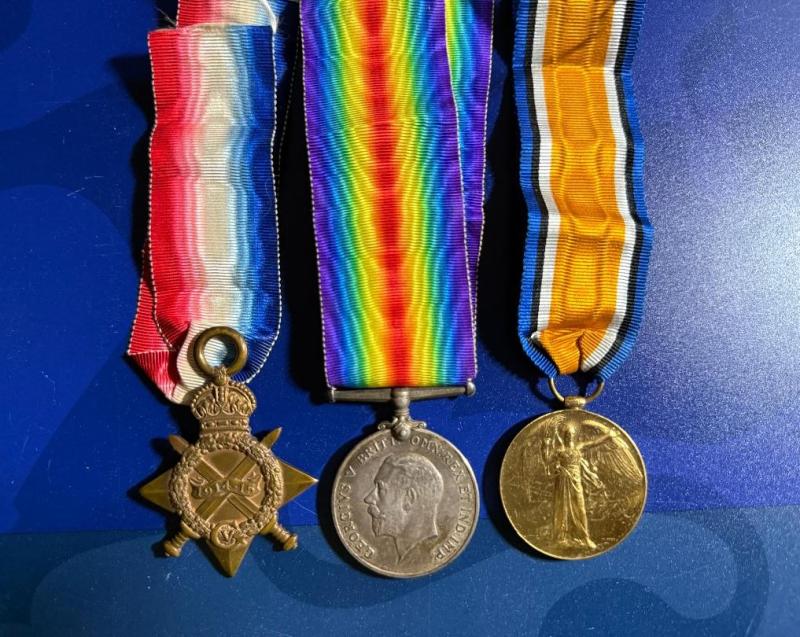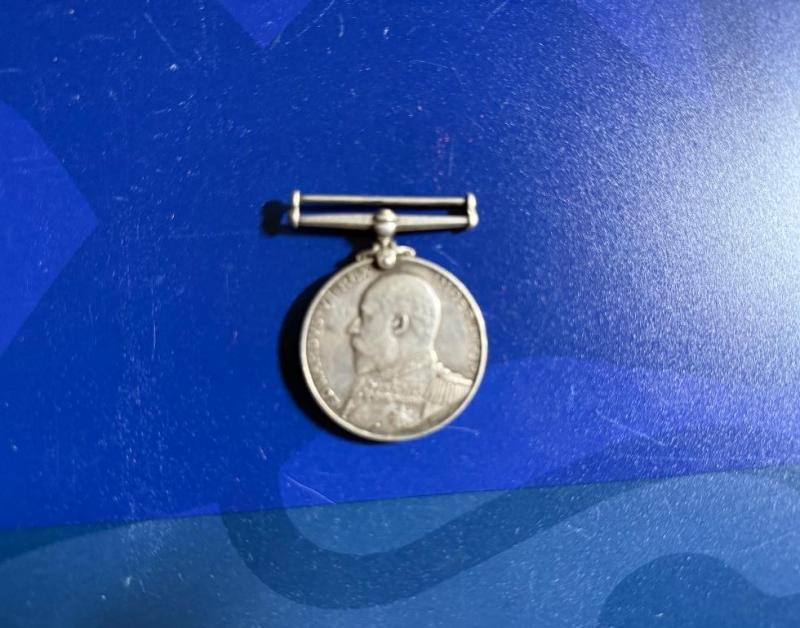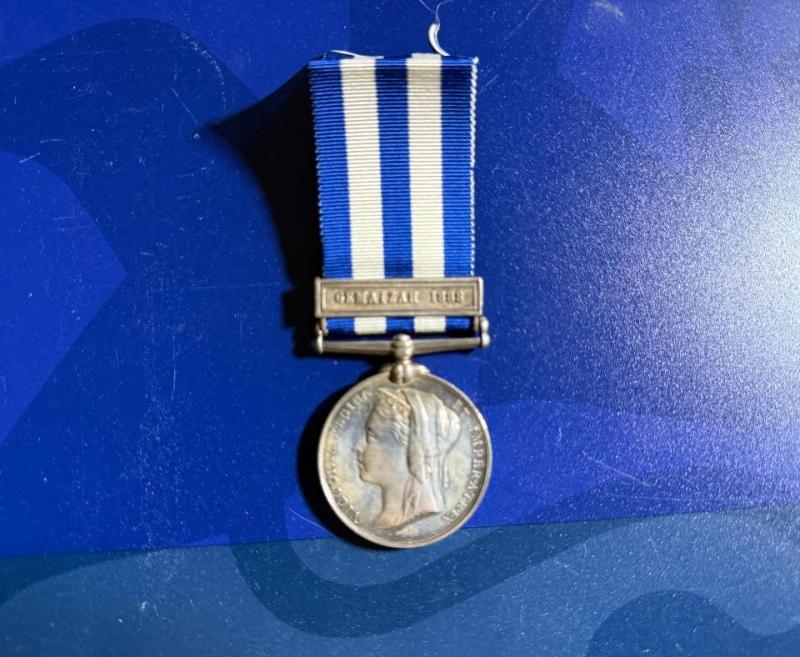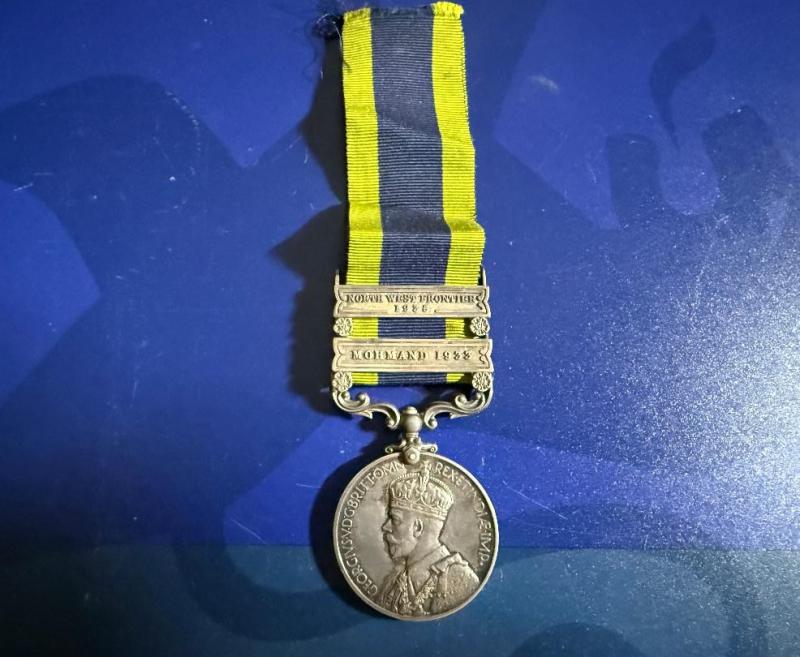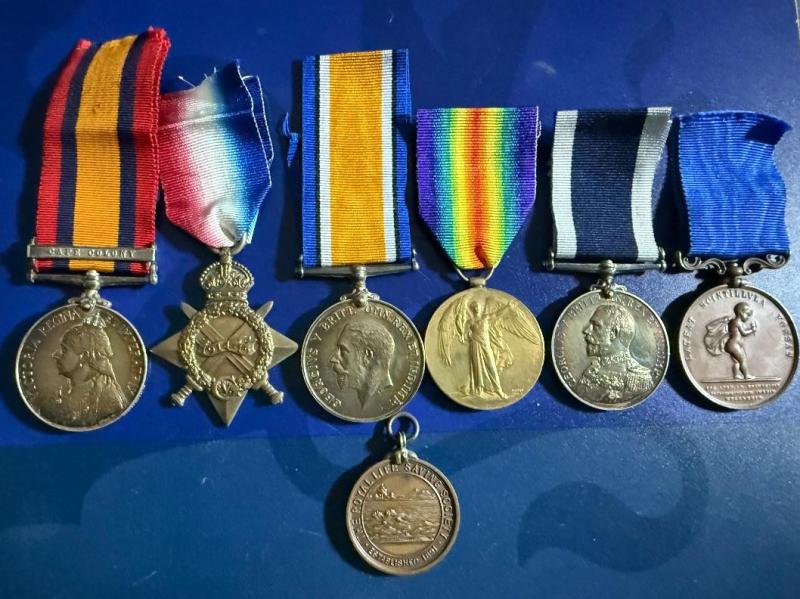BEM To a Fireman For An Explosion At a Munitions Factory In Hereford 1944
British Empire Medal ( GRI ) WILLIAM JOHN DAVIES
CENTRAL CHANCERY OF THE ORDERS
OF KNIGHTHOOD,
St. James's Palace, S.W.I.
gth January, 1945.
The KING has been graciously pleased to
give orders for the undermentioned appoint
ments to the Most Excellent Order of the
British Empire, for the following awards of the
Georg... read more
750.00 GBP
1914/15 Trio To The South Notts Hussars , KIA Gallipoli
1914/15 trio 1390 PTE J WESTERDALE S NOTTS HRS
John Westerdale was a resident of Keyworth and enlisted in Nottingham. He was KIA at Gallipoli on the 22nd of August 1915 . he has no known grave and is commemorated on the Helles Memorial
From CWGC entries it appears the The South Notts Hussars had 6 men KIA on the 22nd of August 1915 and lost a total of 13 men in t... read more
385.00 GBP
1914/15 Trio And SC LS Medal To a Motor Cyclist RE
1914/15 trio 73798 CPL J V CUNNINGHAN RE Spec Cont LS ( Geo V ) JOHN V CUNNINGHAM
Together with box of issue for SC LS medal and original postcard photo in uniform sitting on motorcycle
John Victor Cunningham enlisted into the Royal Engineers Signal Section in October 1915 , his rank being Motor Cycle Cpl . He served throughout the war as a despatch rider with 17... read more
GSM Malaya To Police Lieut F Of M Police, Possibly Acc Killed
GSM bar Malaya 647 P/LT WE GRANT F OF M POL
A Police Lieut W Grant was killed in a car accident in Malaya in 1953 , possibly the same man ?
Medal with original ribbon and in toned EF condition read more
1914/15 Trio To a Boy RN, KIA Jutland
1914/15 trio J37132 R JOHNSTON BOY1 RN
Ralph Johnson a 17 year old moulders labourer from St Helens Lancs enlisted into the Royal Navy in March 1915 as a Boy2 . He was killed in action aboard HMS Barham at Jutland 31st May - 1st June 1916
One of 8 Ships Boys killed when the HMS Barhams sick bay was hit ( see article below )
Battle of Jutland
... read more
Naval Good Shooting medal ( EDVII ) To HMS Amphitrite
Naval Good Shooting medal ( EDVII ) 178034 G SARGENT PO 2CL HMS AMPHRITE
George Jonas Sargent an 18 year old gas works inspector enlisted into the Royal Navy in 1898 and served till 1919
Full service papers available on-line
Medal without ribbon and in GVF condition read more
375.00 GBP
Egypt Medal Bar Gemaizah 1888 To KOSB
Egypt Medal Bar Gemaizah 1888 2697 PTE R DAVIDSON 2/K O SCO BORD
Medal with no pitting and in NEF condition read more
285.00 GBP
Korea/NGS Group of 3 To Royal Marines
Korea medal RM7372 M HULME MNE RM UN Kore NGS bar Malaya ( Geo VI ) RM7372 M HULME MNE RM
Together with original full certificate of service contained in original card cover , certificate of discharge , RFR discharge certificate (2) Registration card , RN Football Association referees certificate , RM certificate of education, British Forces identity certificate
read more
IGS 2 bars Mohmand 1933 NWF 1935 To The RA
IGS 2 bars Mohmand 1933 NWF 1935 780765 GNR E NETHERCLIFT RA
Ernest Netherclift an apprentice stonemason from Hull enlisted into the Royal Artillery in 1928
Medal with slight edge knock, second bar attached to first with wire fittings otherwise medal in toned GVF condition, with original full length of ribbon read more
WW1 Group Of 6 To The RN , KIA Jutland
QSA one bar Cape Colony S G REED OD HMS MONARCH 1914/15 trio 193627 S G REED PO1 RN Navy LSGC ( Geo V ) 193627 S G RED PO HMS VIVID R Humane Society medal in bronze SYDNEY G REED RN NOV 10 1900
Together with Royal Life Saving Society bronze medal PO1 S G REED OCT 1906
Sydney George reed an 18 year old errand boy from Charles in Devon enlisted into the Royal N... read more


